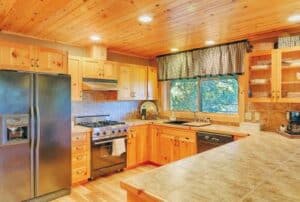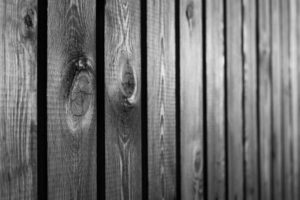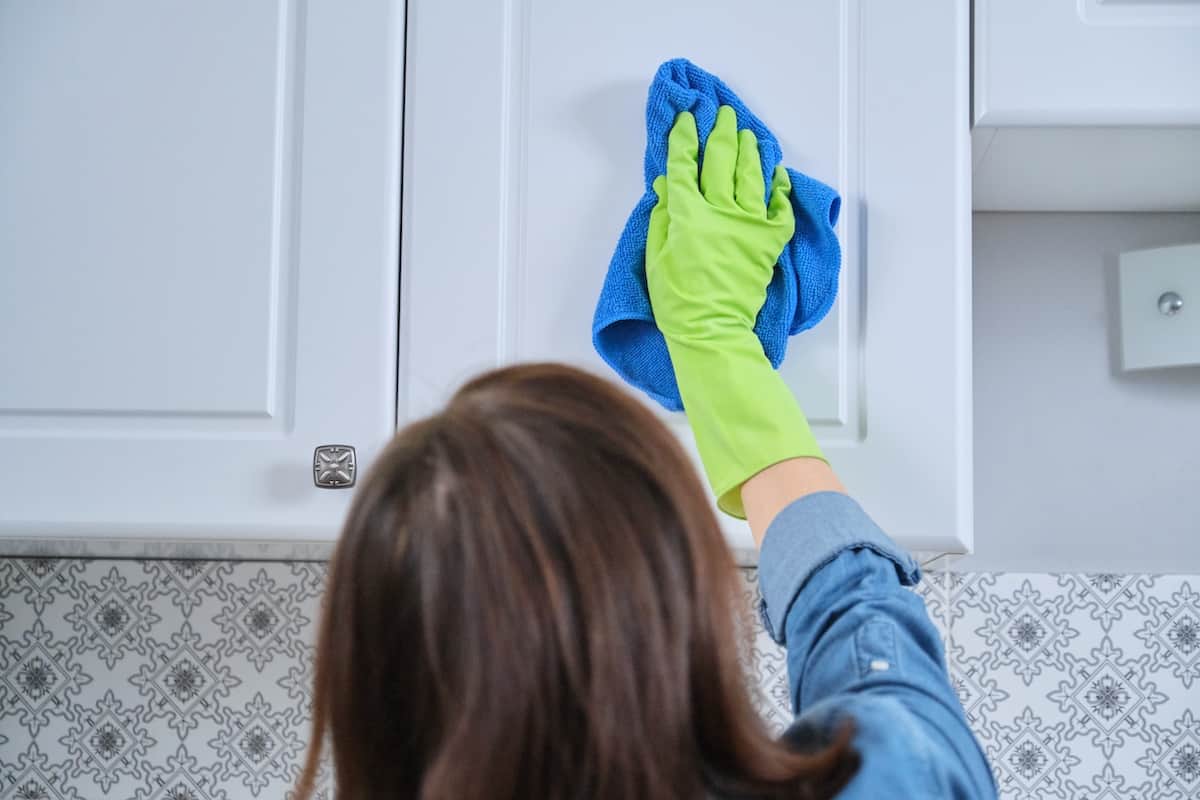DIY Wood Kitchen Cabinet Cleaner
Even in this day and age, there are still some things you can make at home instead of buying them in a store. In order to make a cleaner for the wood cabinet in your kitchen can be one of them. Many people love homemade gifts. If their kids spill something on the floor that they need to clean up right away. You don’t want to wait for hours or days until you can finally get around to making your cleaner. The kids need a cleaner that is safe for them to use.
One great thing about DIY cleaners is that you know exactly what’s going into them. While wood cabinets may not be the biggest problem facing society today. You need to know, your cabinets will be free of any chemicals after cleaning is one less thing you have to worry about.

How do you make homemade wood cabinet cleaner for your kitchen? A simple but effective wood cabinet cleaner consists of:
- 1/2 cup baking soda
- 2 tbsp. dish soap
- 1 tbsp. vinegar
Simply mix all three ingredients in a bowl. Make sure the baking soda is well-incorporated into the solution. You can then use a rag or sponge to spread it onto your cabinets. Let it sit for 10 minutes before wiping the cleaner away with a damp cloth.
This homemade wood cabinet cleaner cleans your cabinets easily. It also leaves behind a fresh smell rather than one that’s reminiscent of chemical cleaners. You will feel good knowing what exactly went into your homemade cleaner. You will not have to worry about any toxic or harmful chemicals lingering on your cabinets.
Homemade Kitchen Cabinet Cleaners
Homemade cleaners are not just a good idea for wood cabinets either. You might have to get rid of a stain on a carpet or spot out of a piece of clothing. There is probably something in your home right now that can work as an effective cleaner.
All it takes is some creativity and research to make the perfect cleaning solution, which is usually much cheaper than buying commercial products too!
The next time you spill something on your floor or take off shoes with muddy soles, don’t head straight to the store to buy an expensive bottle of wood cabinet cleaner; simply try making your own instead!
You can save money and you will know exactly what’s in it and still get the job done effectively. This will establish a fresh scent from the baking soda and vinegar mixture. o one will even know that any dirty work went into cleaning up those messes.
How To Clean Different Kinds Of Wood Stains
Different kinds of stains need different solutions as well as different approaches, so it is important to note what kind of wood you have and the type of stain. In the second portion of this article, we will look at three common types of stains, how to spot them and how to treat them effectively.
Dark Colored Wood
If you notice your cabinets are a very dark color rather than light brown or grey, they are likely made out of stained oak wood. Oakwood frequently has heavy staining, but this can often be sanded away with sandpaper or power-sanded off if the oak is thin enough.
However, it is also possible that the cabinet itself could be cracked by sanding too aggressively. Ensure you use coarser grit sandpaper if you intend to power-sand, and use eye protection when sanding.
If you are finding that your cabinets are reddish or pink, it is probably because they have been around for a while and the natural oak color has started to show through.
Light Colored Wood
If you find the wood appears lighter than average, it might be maple wood rather than oak. Maple is just as sturdy as oak while being lighter in color, thus allowing more of the stain to come through over time.
Use the same solution as above for dealing with stains on both light-colored maple cabinets and dark-stained oak cabinets.
Black Colored Wood
Cabinets that appear nearly black are generally made out of walnut wood. Walnut is a darker wood but has almost no stains unless it has been heavily abused over time.
Use the same procedure as above to remove the stains, being careful not to damage the walnut cabinets themselves.

How Can You Remove Stains On Wood?
If you have dark or black stained oak cabinets then it is best to use sandpaper. You can try some elbow grease rather than risking damaging your cabinets by using power tools.
Sanding can be done manually with hand-held sandpaper. Rub up against the stain in small circular motions until it begins to come off.
It is important to note that when using manual methods of cleaning the wood make sure not to apply too much pressure, as it is easy to damage the wood by rubbing too hard.
It can also be done with power tools such as a sander or belt sander, but again should only be used if the desired effect justifies potential damage to cabinets themselves.
Using Power Tools
If you have light-stained or pink oak cabinets then you can use either sandpaper and elbow grease or power tools for the removal of stains. The main drawback however is that there is a chance that by using power tools you may cause damage to your cabinets, so make sure it makes sense before pressing the trigger!
One general rule of thumb with dark-stained appliances is to avoid using power tools on them as it is very easy for the stain to become permanently embedded in the wood itself. If you use a circular motion or any sort of pressure, there is a chance that your cabinets will be irreversibly damaged.
Lastly, if you have dark walnut-stained cabinets then you are best off not removing the staining at all! This means that unless your home décor calls for it you should leave well enough alone.
The biggest risk here comes from removal by sanding since walnut can be damaged easily and taking too much off can reduce the value and attractiveness of your cabinets without increasing resale value or visual appeal.
What Does This Method Entail?
Sandpaper or a combination of sandpaper grits should be used to remove stains from wood surfaces. For light, stains use 220-grit paper, medium stains use 320-grit paper, and 400 grit paper (or higher) for dark stains.
The process is the same as sanding paint or wood furniture. You should begin with coarse sandpaper to remove most of the stain and then “fine-tune” using a finer grit.
What Materials And Tools Will I Need?
Medium or fine-grit sandpaper (220-400 grit), water if needed, a bucket of soapy water with a scrubbing brush, and rags for cleanup
What Do I Need To Know About Safety And Cost?
Sanding results in wood dust which needs to be cleaned up before it settles on surfaces in the air. Wearing a mask and dust goggles can help to prevent irritation from inhalation or eye contact.
Sanding dark stains is more difficult because it increases the chances of going through to the wood’s surface, so be very careful with this method.
If you opt for the power tool route then there is a potential for damage if you use circular motions or apply pressure; make sure not to do either while using these tools!
The manual method doesn’t cost anything but does require time and effort. One should expect it to take a similar amount of time as doing other basic chores at home!
How Much Time Should I Allow?
15 minutes for light stains, up to 2 hours for heavy ones. This is completely dependent on how deep-seated the staining is and how determined you are to scrub it off! If there’s a strong urge to work hard then be our guest, if not then feel free to take your time and enjoy yourself!

What Signs Indicate That This Method Has Been Successful?
After using the manual method, test to see if the wood grain layer is once again visible.
Circular motions and pressure – doing either will leave circles where the scrubbing tool was, which makes your cabinets look worse than when you started!
It’s best to rub in one direction only; follow the wood grain pattern with your hand to see how it flows if you’re not sure about this. Make sure that all tools are clean before use. Using this process will make sure any excess dirt or dust particles do not scratch up surfaces while cleaning!
A damp cloth can be used to wipe down the surface after finishing. Try not to leave water behind since it can raise the grain of the wood. If you are unsure of how to best eliminate stains from your wood cabinets, contact a local professional!

